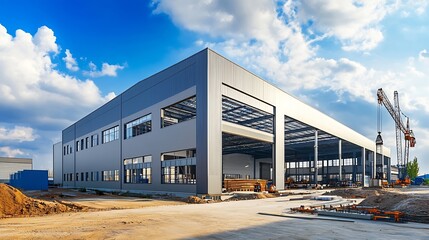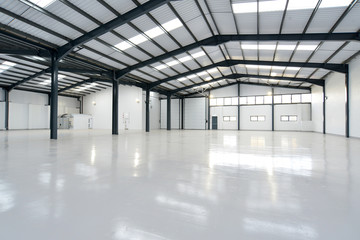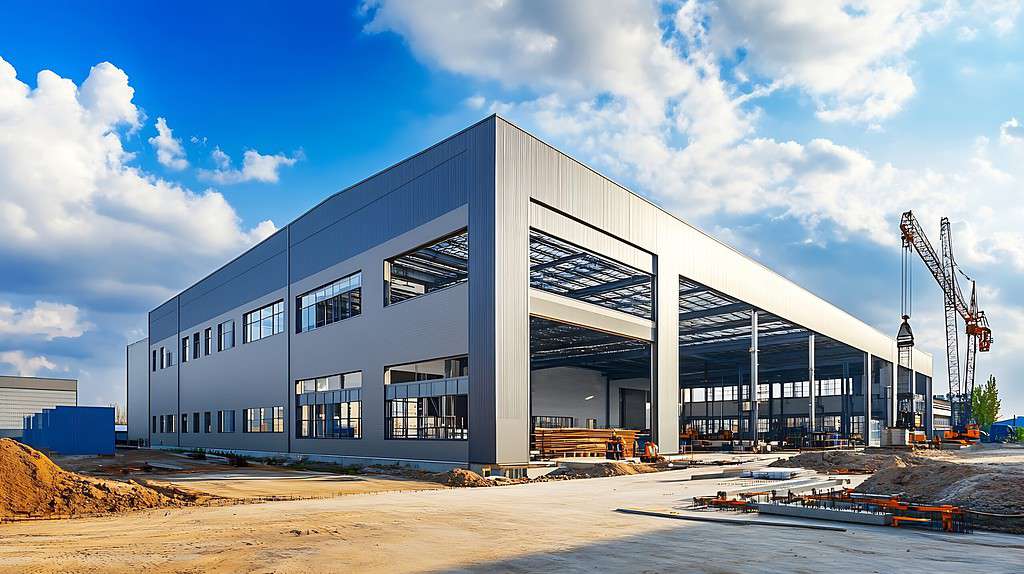
Warehouses have transformed from simple storage spaces to dynamic hubs of commerce and logistics. To keep pace, they demand innovative construction materials that are efficient, durable, and flexible. You’re about to explore a world of groundbreaking materials revolutionizing warehouse design and function.
Warehouses once relied on traditional building materials like concrete structures and clay bricks. Today, the construction industry is embracing innovative materials and sustainable construction practices.
These new materials offer a multitude of benefits, from improved energy efficiency and reduced environmental impact to enhanced durability and lower repair costs.
The Foundation: Smarter Floors
Your warehouse floor is its backbone. It handles heavy equipment, constant foot traffic, and frequent resupply. Traditional concrete is durable but can crack and deteriorate over time. Newer materials offer better performance and longevity.
- Polished concrete: This floor shines. It’s tough, easy to clean, and reflects light, saving energy.
- Epoxy coatings: This protective layer seals concrete. It makes floors stronger, resistant to chemicals and stains.
- ESD flooring: For electronics warehouses, this floor prevents damage from static electricity.
Engineered fabric buildings also use specialized flooring to withstand heavy loads and provide a clean, durable surface.
Choosing the right floor material is crucial. It affects worker safety, equipment lifespan, and overall warehouse efficiency.
Building a Strong Frame
A warehouse’s skeleton needs strength and flexibility. Steel has long been the go-to choice, but new options are emerging, such as:
- Cross-laminated timber (CLT): This engineered wood offers impressive strength, sustainability, and aesthetics. It’s a solid choice for taller warehouses.
- Modular steel framing: These prefabricated components speed up construction and reduce waste.
- High-strength aluminum alloys: Lightweight yet incredibly strong, aluminum frames suit large, open spaces.
These materials offer diverse benefits, from faster construction to reduced environmental impact. The right choice depends on your warehouse’s specific needs and goals.
The Perfect Roof
Your warehouse roof safeguards everything within. It must be weatherproof, energy efficient, and low-maintenance.
- Cool roofs: These roofs use special materials that reflect sunlight, reducing energy consumption. Compared to traditional materials, cool roofs can lower cooling costs.
- Green roofs: These living roofs offer multiple benefits. They insulate your building, manage rainwater, and even improve air quality. Green roofs are a sustainable choice for construction projects.
- Solar panels: These sustainable building materials convert sunlight into electricity. They reduce energy costs and help the environment.
Choosing the right roof depends on your specific needs and location. Consider factors like climate, energy efficiency goals, and budget when making your decision.
Walls That Work Harder
Warehouse walls do more than just enclose a space. They contribute significantly to a building’s performance.
- Insulated metal panels: These offer excellent insulation, durability, and fire resistance.
- Eco-friendly building materials: Consider materials like translucent wood or komatsu seiten fabric for sustainable and visually appealing wall options.
- Transparent wood: This innovative material combines the strength of wood with transparency, allowing natural light to enter while maintaining privacy.
- Modular wall systems: These flexible systems let you easily change your warehouse layout as your business grows.
Effective wall choices impact energy efficiency, indoor air quality, and overall building aesthetics.

Lighting That Improves Productivity
Effective lighting is crucial for worker safety and productivity.
- LED lighting: Energy-efficient and long-lasting, LED lighting provides bright, even illumination.
- Smart lighting systems: Adjusting light levels based on occupancy and daylight, smart lighting systems optimize energy efficiency.
- Natural lighting: Maximizing daylight through skylights and large windows reduces reliance on artificial lighting and enhances the workspace.
Sustainable Materials: Building Green
Warehouses can be eco-friendly too. Sustainable engineering materials help protect the environment and reduce your building’s impact.
- Recycled materials: Use materials made from recycled items. This reduces waste and saves resources.
- Low-VOC paints and coatings: These products release fewer harmful chemicals into the air, improving indoor air quality.
- Water-efficient fixtures: Use toilets, faucets, and showerheads that conserve water. This reduces your water bill and helps protect water resources.
- Local materials: Using materials sourced locally reduces transportation emissions and supports the local economy.
By choosing sustainable materials, you contribute to a healthier planet and create a more responsible warehouse.
Fire Protection: Safety First
Warehouse fires are devastating. Protecting lives and property requires a strong focus on fire safety.
- Fire-resistant insulation: This eco-friendly building material shields your warehouse’s structure from flames.
- Sprinkler systems: Quick and effective fire suppression is essential.
- Smoke Detection and Alarm Systems: Early warning systems save lives and minimize damage.
A comprehensive fire protection system is vital for warehouse safety.
The Future of Warehouse Materials
The construction industry is a dynamic field. New materials and technologies emerge constantly. Warehouses, being essential to modern logistics, benefit greatly from these advancements.
- Self-healing concrete: This innovative material autonomously repairs cracks, extending the concrete’s lifespan and reducing maintenance costs.
- Aerogel insulation: Exceptionally lightweight and energy-efficient, aerogel insulation excels at heat regulation, lowering energy bills.
- 3D-printed building components: Offering design flexibility and rapid construction, 3D-printed components can reduce waste and labor costs.
- Translucent wood: A breakthrough material combining wood’s warmth with light transmission, translucent wood enhances natural lighting and workspace ambiance.
- Komatsu seiten fabric: This high-performance fabric provides exceptional durability, weather resistance, and fire protection for warehouse structures.
These materials represent a glimpse into the future of warehouse construction. Their potential to enhance sustainability, efficiency, and durability is immense.
Final Thoughts
The future of warehousing is bright. Innovative materials promise to transform how we build and operate these essential spaces. Embrace these advancements. Build smarter, greener warehouses today


